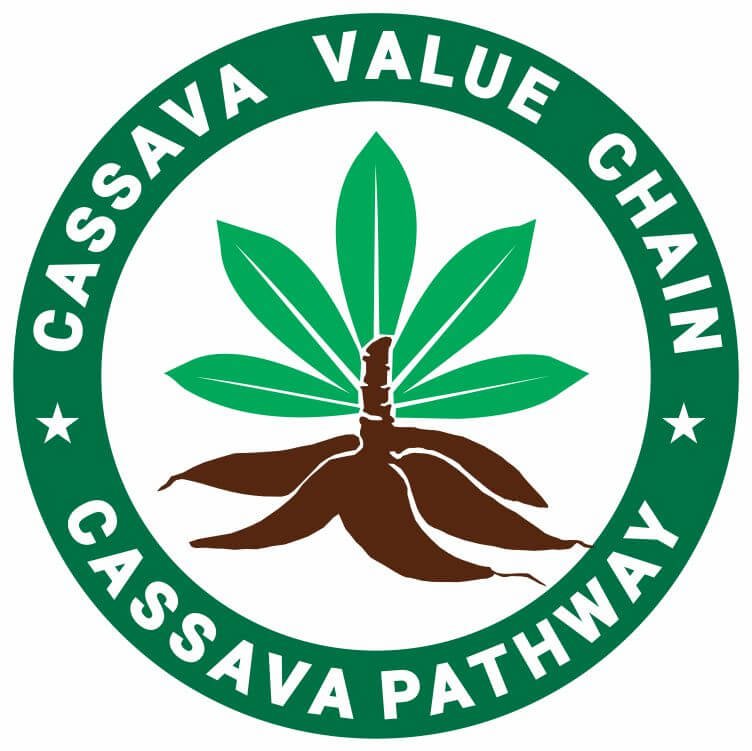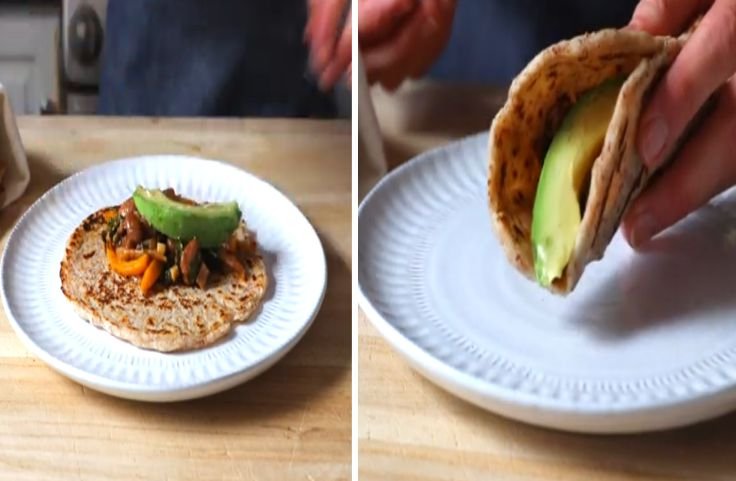Tapioca tortillas are soft, chewy, and naturally gluten-free, perfect for wraps, tacos, or quick snacks. Here’s what makes them a simple, tasty alternative to wheat-based flatbreads.
Tapioca tortillas, different from cassava tortillas and cassava flour tortillas, give you a soft, chewy bite that feels different from what you’re used to with wheat or even cassava flour wraps.
Made from pure tapioca starch, they skip the fiber but offer a texture that holds up well without falling apart.
You might find them especially helpful if you’re avoiding gluten, grains, or nuts.
They cook quickly, bend without cracking, and pair well with anything, from spicy grilled meat to fresh veggie fillings.
You don’t need to overhaul your diet to enjoy them. If you’ve been looking for something light, neutral in flavor, and easy to fold around your favorite foods, you’re in the right place.
Whether you follow a paleo plan or just want a break from wheat-based options, tapioca tortillas might be what your kitchen’s been missing.
Related: Must-try Sweet Tapioca Recipes
Table of Contents
- What Are Tapioca Tortillas?
- Ingredients for Tapioca Tortillas
- How to Make Tapioca Tortillas at Home
- What Makes Tapioca Tortillas Unique?
- Best Ways to Use Tapioca Tortillas
- Tapioca Tortillas vs Cassava Tortillas vs Cassava Flour Tortillas
- Storage and Reheating Tips
- Are Tapioca Tortillas Healthy?
- Conclusion
- Frequently Asked Questions
What Are Tapioca Tortillas?
Tapioca tortillas are soft, pliable wraps made from tapioca starch, a refined extract of the cassava root.
Unlike cassava tortillas or cassava flour tortillas, which use the whole root and retain its fiber and nutrients, tapioca tortillas rely solely on the starch.
This gives them a smooth, chewy texture and a clean, neutral taste.
They’re naturally gluten-free, grain-free, and nut-free, which makes them a solid choice if you have food sensitivities or follow a restrictive diet like paleo.
What sets them apart is their flexibility; they bend without tearing, making them ideal for wraps, tacos, or roll-ups.
Because of their consistency and light structure, they hold fillings well and work across different cuisines.
Tapioca tortillas are not just a substitute; they’re their own thing entirely.
Related: Popular Tapioca Snacks to Explore
Ingredients for Tapioca Tortillas
Tapioca tortillas give you a soft, chewy wrap that fits perfectly into gluten-free and grain-free diets.
The ingredients are simple, and with the right mix, you can make tortillas that bend, roll, and taste great.
Tapioca Starch: The Base of Every Good Tapioca Tortilla
Tapioca starch, made from cassava root, gives your tortillas their signature chew and stretch.
It’s smoother than cassava flour, blends easily, and works with sweet or savory fillings.
Don’t swap it with cassava flour; they behave very differently when cooked.
Hot Water or Plant Milk: To Bring the Dough Together
A warm liquid, like hot water or plant-based milk, binds the dough. Heat activates the starch, creating a soft, pliable texture.
Almond or coconut milk adds flavor, but the liquid must be hot to avoid lumps and ensure good consistency.
Salt: A Small Addition That Brings Out the Flavor
Salt improves flavor, even in small amounts. Without it, tortillas taste bland.
A pinch balances fillings and adds depth. If reducing sodium, use a little less, but skipping it entirely might leave your tortillas tasting flat and less satisfying overall.
Oil: For Added Moisture and Flexibility
Oil keeps your tortillas from drying out or cracking.
Just a teaspoon or two of a neutral oil like avocado or sunflower improves texture, adds moisture, and helps the dough stay flexible enough to roll, fold, and cook without breaking.
Psyllium Husk or Binders: For Better Texture and Strength
Binders help your tortillas hold together when filled. Psyllium husk absorbs water and improves elasticity.
You can also use an egg or flax egg for similar results.
Each option strengthens the dough and prevents tears during rolling or stuffing.
Related Posts
Ultimate Guide To Tapioca Pearls
Are Tapioca Pearls Gluten Free?
Can Diabetics Eat Tapioca Pudding?
Tapioca Puffs Made from Cassava Starch
The Light Crispy Tapioca Crackers
Tapioca Snacks: Crispy and Flavorful Bites
How to Make Tapioca Tortillas at Home
Making tapioca tortillas at home is easy once you get the feel for the dough.
With just a few ingredients, you can create gluten-free wraps that are soft, stretchy, and perfect for any filling.
Gather Your Ingredients and Set the Right Dough Base
You’ll need just three things to get started: 2 cups of tapioca starch, 1 cup of hot water, and a pinch of salt.
Mix the starch and salt in a bowl. Slowly pour in the hot water as you stir.
You can use a spoon, but your hands help you feel when the dough starts to come together.
The goal is a soft, sticky dough that holds without breaking apart.
Knead the Dough Until It Feels Smooth and Easy to Work With
After the dough comes together, knead it gently for about three to five minutes.
This step helps create that stretchy, elastic feel that makes the tortillas flexible.
You’ll notice the texture change as you work it; it becomes smoother and easier to shape.
If it sticks too much, sprinkle a bit more starch. If it cracks, wet your hands slightly and keep kneading until it softens again.
Let the Dough Rest to Improve Flexibility and Rolling
Now that your dough is smooth, let it rest for 15 to 30 minutes. Cover the bowl with a clean cloth or lid to keep it from drying out.
During this time, the dough relaxes, which makes it easier to roll out.
Use this break to clean your space and get your tools ready: a rolling pin, some parchment paper, and a flat surface.
Roll Each Dough Ball into a Thin and Even Round
Once rested, divide the dough into small balls about the size of a golf ball. This makes it easier to roll each one evenly.
Place a ball between two pieces of parchment paper and press it flat using a rolling pin.
Aim for a thin circle about one-eighth of an inch thick. The paper keeps the dough from sticking and gives you smooth edges.
Cook on a Hot Skillet Until Bubbly and Slightly Golden
Heat a non-stick pan or comal over medium-high heat. Once hot, peel the tortilla off the paper and place it in the pan.
Cook for about 30 to 60 seconds, or until bubbles appear. Flip it over and cook the other side for another 30 seconds.
The tortilla should stay soft and bendy, not crisp. Stack them in a clean towel to keep warm and moist.
Related: Tapioca Bubble Tea: The Boba’s Chewy Star
What Makes Tapioca Tortillas Unique?
Tapioca tortillas stand out for their soft, stretchy texture and gluten-free base.
If you’re looking for a wrap that bends without breaking and pairs well with both sweet and savory fillings, this might just be your go-to option.
Enjoy the Soft, Chewy Texture That Bends Without Breaking
Tapioca tortillas give you a soft, chewy bite that’s different from flour or corn versions.
They’re naturally elastic, so they don’t crack when folded or rolled.
This makes them perfect for wraps, tacos, and roll-ups without the mess. You won’t need to worry about them falling apart; just wrap and enjoy.
Get a Neutral Flavor That Lets Your Fillings Shine
These tortillas don’t compete with what you put inside. Their mild taste blends in and lets bold or delicate fillings take center stage.
From spicy meats to fresh fruits or creamy spreads, the flavor stays balanced. You’re free to experiment without clashing tastes.
Perfect for Sweet or Savory Dishes at Any Meal
You can use tapioca tortillas any time of day. Try them with breakfast scrambles, veggie wraps, taco fillings, or dessert spreads.
Their flexibility and mild flavor make them a solid base for both salty and sweet creations. Whatever your craving, these tortillas adapt easily.
Stay Gluten-Free Without Missing the Good Stuff
If you avoid gluten, these tortillas let you enjoy soft wraps without compromise.
Made entirely from tapioca starch, they’re naturally gluten-free and safe for people with celiac disease or gluten intolerance.
You get a doughy texture with none of the grains.
Add Variety to Your Diet with a Clean, Simple Option
Tapioca tortillas give you a different take on everyday wraps. You’re not stuck with flour or corn.
Plus, they’re free from additives and work well for those on paleo, gluten-free, or dairy-free diets.
Simple ingredients, clean taste, and great texture all in one.
Related: Tapioca Pancakes: A Delightful Gluten-Free Alternative
Best Ways to Use Tapioca Tortillas
Tapioca tortillas give you more than just a wrap. With their soft texture and gluten-free makeup, they open the door to fresh meal ideas for breakfast, lunch, dinner, and even snacks.
Use Them as Gluten-Free Taco Shells That Won’t Break or Crumble
Tired of tacos that fall apart halfway through the bite? Tapioca tortillas hold together well, even with juicy fillings like grilled meats, spicy beans, or roasted veggies.
Their soft texture makes them easy to fold without splitting.
Load them up with whatever you love; taco night just got easier and less messy.
Plus, they’re naturally gluten-free, so you can enjoy your favorite fillings without worrying about the wrap breaking down.
Make Quick, Satisfying Wraps with Endless Flavor Possibilities
Wraps are a great way to use tapioca tortillas. Grab a warm tortilla, fill it with grilled chicken, crunchy lettuce, sliced avocado, and your go-to sauce.
You get a balanced meal that you can eat on the move. If you’re vegan, try chickpeas, spinach, and a dash of lime.
These tortillas make room for any flavor combo, so you can create meals that match your taste or diet.
Turn Them into Breakfast Burritos That Keep You Full
Start your day with a filling breakfast you can look forward to. Roll scrambled eggs, sautéed veggies, and cheese into a tapioca tortilla and heat it for a warm, satisfying bite.
If you’ve got a sweet tooth in the morning, try spreading nut butter, adding banana slices, and topping with a drizzle of honey.
Either way, these tortillas work well for both savory and sweet breakfast ideas.
Make Easy Quesadillas Without the Grain or Gluten
You can use tapioca tortillas to make quick quesadillas. Add your favorite cheese and fillings between two tortillas, then cook on a skillet until the outside is golden and the inside melts together.
The result is a crispy, chewy snack or meal you can tweak to your liking.
Use spinach and feta for something fresh, or go sweet with fruit and a chocolate spread. Either way, it’s simple and satisfying.
Related: Making Chips from Cassava Tortillas
Tapioca Tortillas vs Cassava Tortillas vs Cassava Flour Tortillas
If you’re choosing between tapioca, cassava, and cassava flour tortillas, it helps to know what sets them apart.
Each one comes from the cassava root but brings a different texture, taste, and purpose to the table.
Tapioca Tortillas: Soft, Chewy, and Perfect for Wrapping
Tapioca tortillas are made from pure tapioca starch, which is extracted from cassava root.
You’ll get a soft, stretchy tortilla that bends easily without cracking. That makes them great for wraps, tacos, or anything that needs flexibility.
They have a mild taste and smooth texture, so they won’t overpower your fillings.
If you want something light, pliable, and gluten-free, tapioca tortillas are the easiest choice to work with.
Cassava Tortillas: A Balanced Middle Ground with More Bite
Cassava tortillas are made from cassava root in a way that blends the starch and some fiber, giving them more body than tapioca tortillas but not as dense as cassava flour ones.
They hold their shape better than tapioca but still stay soft enough to fold. The flavor is slightly earthy, and they give a bit more chew.
These are good if you want something heartier without losing too much flexibility.
Cassava Flour Tortillas: Dense, Earthy, and Closer to Bread
Cassava flour tortillas use the whole cassava root, not just the starch.
This adds fiber and nutrients but makes the texture thicker and more bread-like.
They’re less stretchy and can crack if rolled too thin. Still, they work well for quesadillas, tostadas, or any dish where you want a more filling base.
If you’re after a grain-free option that feels more substantial, cassava flour tortillas deliver that experience.
Which One Should You Use?
Choose tapioca tortillas when you need soft, flexible wraps that won’t tear.
Go for cassava tortillas if you want a balance between flexibility and structure.
Use cassava flour tortillas when you’re aiming for a heartier, denser option that feels closer to flatbread.
Your choice depends on how you plan to serve them and how much texture you want in each bite.
| Feature | Tapioca Tortillas | Cassava Tortillas | Cassava Flour Tortillas |
|---|---|---|---|
| Main Ingredient | Tapioca starch (from cassava root) | Cassava root (partially processed) | Cassava flour (whole root ground into flour) |
| Texture | Soft, stretchy, and very pliable | Soft but with a bit more bite | Dense, thicker, and more bread-like |
| Taste | Mild and neutral | Mild with a light earthy note | Earthy and slightly nutty |
| Best Use | Wraps, tacos, crepes, roll-ups | Burritos, wraps, quesadillas | Quesadillas, flatbreads, tostadas |
| Flexibility | Very flexible and easy to fold | Fairly flexible but holds shape better | Less flexible, may crack if rolled thin |
| Gluten-Free | Yes | Yes | Yes |
| Nutritional Value | Low in fiber, protein, and fat | Moderate fiber and minimal protein | Higher in fiber and small amounts of protein |
| Diet-Friendly | Fits gluten-free and grain-free diets | Suitable for gluten-free and paleo diets | Ideal for grain-free, gluten-free, high-fiber preferences |
| Mouthfeel | Smooth and chewy | Slight chew with more structure | Firm and dense with a hearty bite |
| Filling Compatibility | Works well with any type of filling | Handles medium to heavy fillings | Best for sturdy or baked toppings |
Storage and Reheating Tips
To keep tapioca tortillas soft and chewy, store them in an airtight container or wrap them tightly in plastic for up to one week in the fridge.
For longer storage, freeze them with parchment paper between each one in a freezer-safe bag.
They’ll last up to three months, just label the date.
When reheating, use a skillet over low heat for 30 seconds per side or microwave them between damp paper towels for 15 to 20 seconds.
You can also add a few drops of water and cover them to rehydrate with steam.
If you’ve prepared uncooked dough, wrap it well and refrigerate for two days or freeze for later.
Thaw frozen dough in the fridge before use. These tips help keep your tortillas fresh and flexible anytime you’re ready to eat.
Are Tapioca Tortillas Healthy?
Tapioca tortillas can be a good fit for your gluten-free lifestyle, especially if you have celiac disease or wheat allergies.
Since they’re made from tapioca starch, they’re naturally free from gluten and grains.
But here’s something to think about: they’re mostly carbs and don’t give you much fat or protein.
If you’re on a low-carb or high-protein diet, you’ll want to pair them with other nutrient-rich foods to keep things balanced.
You can easily boost their nutrition by mixing in ingredients like chia seeds, lentils, or enriched flours.
These add fiber and important nutrients, making each bite more satisfying.
So while they’re not the most balanced choice on their own, with a few tweaks, tapioca tortillas can fit right into your meals and support your dietary goals without missing out on flavor. A versatile option in modern cuisine.
Conclusion
Tapioca tortillas offer a grain-free, gluten-free option that works well for many dietary needs, especially if you’re avoiding wheat.
They’re soft, flexible, and easy to make or buy. However, they’re mainly carbohydrates and low in fiber, fat, and protein.
If you’re using them regularly, balance things out with protein-rich fillings and fiber-boosting ingredients.
This keeps you full longer and supports your nutritional goals. You don’t have to give them up; just be thoughtful about what goes inside or how you prepare them.
With a few creative changes, you can enjoy tasty, healthier tortillas that work for your lifestyle, whether you’re eating clean, gluten-free, or just looking for a break from grains.
Frequently Asked Questions
Are tapioca tortillas low in carbs?
No, tapioca tortillas are high in carbohydrates. They provide quick energy but aren’t ideal if you’re following a low-carb diet.
Do tapioca tortillas contain any gluten?
Tapioca tortillas are naturally gluten-free. They’re safe for people with celiac disease or gluten sensitivity when made from pure tapioca starch.
Can I make tapioca tortillas more nutritious?
Yes, you can improve their nutrition by adding chia seeds, beans, or mixing with other flours like almond or chickpea flour for protein and fiber.
Are tapioca tortillas suitable for weight loss?
They’re not the best for weight loss due to low fiber and protein. Add veggies or lean protein to create a more balanced, filling meal.

Chimeremeze Emeh is a writer and researcher passionate about Africa’s most transformative root crop—cassava. Through his work at cassavavaluechain.com, he explores the entire cassava industry, from cultivation and processing to its diverse applications in food, health, and industrial use.
He also writes for palmoilpalm.com, where he shares his extensive experience and deep-rooted knowledge of palm oil, covering red palm oil, palm kernel oil, and refined products. His work there reflects his lifelong connection to agriculture and his commitment to promoting sustainable value chains in Africa.
Driven by curiosity and purpose, Chimeremeze aims to shed light on how cassava continues to empower communities, strengthen food systems, and link traditional farming wisdom with modern innovation.

